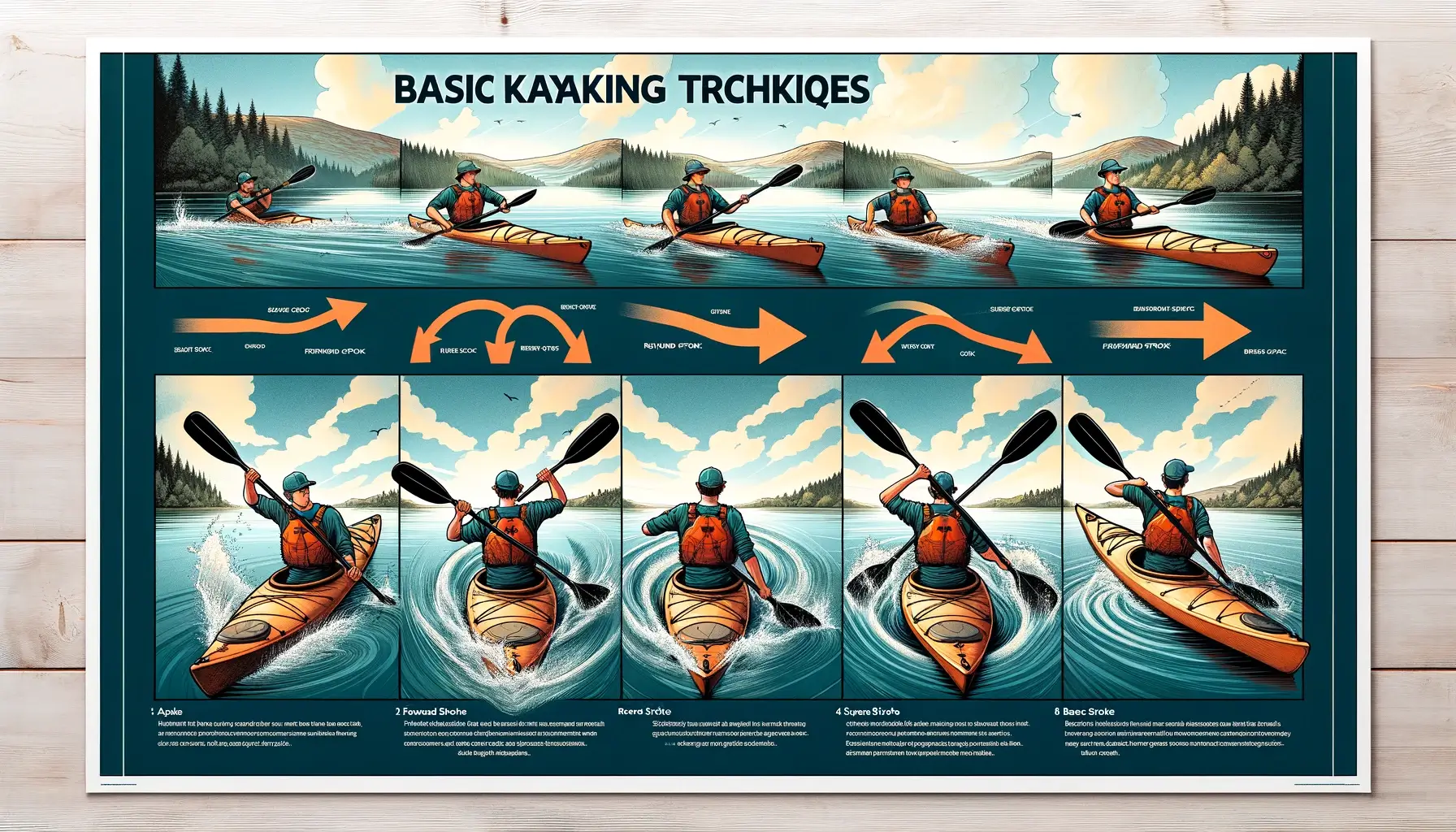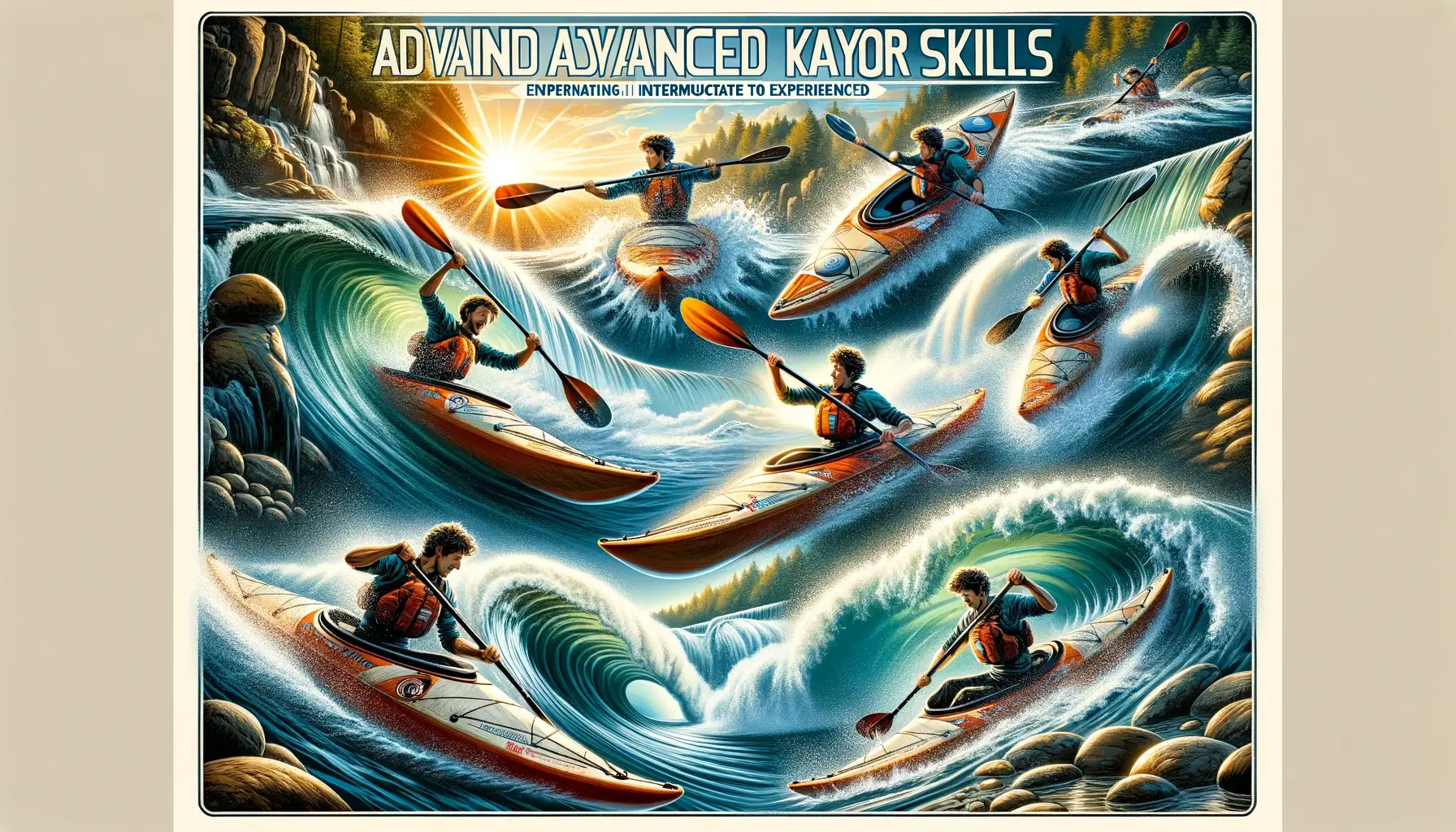To kayak step by step, first master paddling techniques. Next, practice getting in and out of the kayak safely.
Kayaking is a thrilling watersport that offers a unique way to explore nature and waterways. Whether you’re a beginner or an experienced paddler, learning how to kayak properly is essential for your safety and enjoyment. By following a few simple steps and techniques, you can quickly become confident navigating the waters in a kayak.
In this guide, we will take you through the process of kayaking step by step, from choosing the right equipment to mastering the basic paddling strokes. So, let’s dive in and discover the exciting world of kayaking!
Choosing The Right Kayak
Choosing the right kayak is an essential step for beginners to enjoy kayaking. This step-by-step guide covers everything from selecting the appropriate size and type of kayak to understanding basic paddling techniques, ensuring a successful and enjoyable experience on the water.
Consider Kayak Types
When choosing a kayak, you’ll need to consider the different types available.
- Sit-on-top kayaks are great for beginners since they are easy to get in and out of.
- Recreational kayaks are stable and suitable for calm waters like lakes and slow-moving rivers.
- Touring kayaks are ideal for longer trips and rougher waters due to their sleek design.
- Whitewater kayaks are maneuverable and designed for navigating fast-flowing rivers.
Assess Your Skill Level
Before making a choice, evaluate your skill level to match the kayak type.
- Beginners should opt for stable and easy-to-maneuver kayaks to build confidence.
- Intermediate paddlers may consider touring kayaks for longer expeditions and varying conditions.
- Advanced paddlers can explore specialized kayaks like whitewater or sea kayaks for specific challenges.
Essential Gear For Kayaking
Kayaking is an exhilarating outdoor activity that requires essential gear to ensure a safe and enjoyable experience. Before embarking on your kayaking adventure, it is crucial to equip yourself with the necessary gear that will enhance your performance and guarantee your safety on the water.
Personal Flotation Device (PFD)
- A personal flotation device is a must-have item for kayaking safety.
- It ensures buoyancy and can be a lifesaver in case of emergencies.
- Ensure your PFD fits properly and is approved by the Coast Guard.
Paddle And Spray Skirt
- A high-quality paddle is essential for propelling and maneuvering your kayak.
- Invest in a paddle that is the right length and material for your comfort.
- A spray skirt helps keep water out of your kayak, especially in rough waters.
- Choose a spray skirt that fits snugly around your waist and cockpit.
Safety Precautions
When it comes to kayaking, safety is paramount. Before hitting the water, it’s crucial to understand and implement safety precautions to ensure a fun and secure paddling experience. Whether you are a beginner or an experienced kayaker, adhering to safety measures ensures a smooth and enjoyable adventure.
Learn Basic Paddling Techniques
Learning basic paddling techniques is essential to navigate the waters safely. Ensure you have a good understanding of forward strokes, backward strokes, and turning techniques. Practicing these maneuvers in a controlled environment will better prepare you for unexpected situations you may encounter in open waters.
Understand Weather Conditions
Checking the weather conditions before heading out for a kayaking trip is vital. Be mindful of the wind speed, tides, and potential weather changes. Always check the weather forecast and avoid kayaking in extreme conditions, such as storms or high winds.
Additionally, wearing a personal flotation device (PFD) is non-negotiable. Even if you consider yourself a strong swimmer, a PFD provides an extra layer of safety and could potentially save your life in an emergency.
Always let someone know your paddling plans and expected return time, especially if venturing out alone. This ensures that in case of any mishaps, someone knows your whereabouts and can provide assistance if needed.
Remember, safety should never be compromised for thrill and adventure. By adhering to these safety precautions, you can enjoy the wonders of kayaking while prioritizing your well-being.
Launching Your Kayak
Launching your kayak is the first step in embarking on an exciting and adventurous journey on the water. It’s important to make sure you do it right, starting with finding a suitable entry point.
Find A Suitable Entry Point
When looking for a suitable entry point to launch your kayak, keep in mind that it should be a location that provides easy access to the water. Ideally, you want a place where the water is calm and there are no obstacles in your way. Look for a sandy or gravel-filled area where you can easily enter and exit your kayak. Avoid rocky or uneven surfaces that may damage your kayak or make it difficult to get in and out.
If you’re kayaking in a river or strong current, look for an entry point that allows you to launch upstream. This way, you’ll have a natural flow of water to help you start your journey smoothly.
Before launching, it’s also essential to check for any local regulations or permits that may be required. Some areas may have specific rules for kayak launching and use, so make sure you’re aware of and adhere to these guidelines.
Proper Sitting Position
Once you’ve found a suitable entry point, it’s time to position yourself correctly in the kayak. Maintaining a proper sitting position will not only enhance your paddling experience but also ensure your safety and stability on the water.
Here’s how you can achieve a proper sitting position:
- Start by sliding into the kayak from the entry point, making sure your weight is evenly distributed.
- Place your feet securely inside the foot pegs or footrests, allowing for a comfortable and balanced position.
- Keep your back straight and upright, aligning your spine with the kayak’s seating area.
- Hold the paddle with a relaxed grip, and rest your hands comfortably on the paddle shaft.
Remember, maintaining a proper sitting position throughout your kayaking session will prevent strain on your back and improve your overall maneuverability.
Basic Kayaking Techniques

When it comes to kayaking, mastering the basic techniques is essential for a smooth and enjoyable experience on the water. Whether you’re a beginner or have some experience, understanding the fundamental kayaking techniques will help you paddle efficiently and confidently. In this section, we will guide you step by step through the basic techniques that every kayaker should know. Let’s dive in!
Forward Stroke
The forward stroke is the foundation of kayaking and it involves propelling the kayak forward in a straight line. Follow these steps to execute a proper forward stroke:
- Sit in an upright position with your back fully supported by the kayak’s backrest.
- Hold the paddle with your hands shoulder-width apart, ensuring that your grip is firm but not too tight.
- Extend your arms forward, keeping them slightly bent.
- Dip the blade of the paddle into the water near your toes, rotating your torso to reach as far forward as possible.
- As the blade fully submerges, sweep it back in a straight line towards your hip, using your core muscles to generate power.
- Rotate your torso back to the starting position and repeat the stroke on the other side.
Sweep Stroke
The sweep stroke is also an important technique that allows you to turn your kayak efficiently. Follow these steps to execute a sweep stroke:
- Sit in an upright position with your back fully supported by the kayak’s backrest.
- Hold the paddle with your hands shoulder-width apart, ensuring that your grip is firm but not too tight.
- Extend your arms slightly in front of you, keeping them slightly bent.
- Dip the blade of the paddle into the water near your toes at a 45-degree angle away from the kayak.
- As the blade fully submerges, sweep it in a wide arc away from the kayak towards the stern.
- Apply more pressure on the stroke to make a sharper turn.
- To straighten the kayak, reverse the stroke by sweeping the paddle toward the bow.
Mastering these basic kayaking techniques will not only enhance your paddling skills but also make your kayaking adventures safer and more enjoyable. Practice these techniques regularly and experiment with different paddle angles to find what works best for you. Happy paddling!
Turning And Maneuvering
When it comes to kayaking, turning and maneuvering is a crucial skills to master, especially when navigating through tight spaces or changing directions swiftly. In this section, we’ll cover the key techniques for turning and maneuvering a kayak effectively, including edging the kayak and using the rudder.
Edging The Kayak
Edging the kayak involves tilting the kayak by shifting your body weight to one side while keeping the boat level. This technique allows for better control and maneuverability when turning. To edge your kayak, simply lean your upper body and tilt your hips in the intended direction of the turn, while keeping your lower body stable.
Using The Rudder
Another effective method for turning and maneuvering a kayak is using the rudder. Many kayaks are equipped with a rudder system that can be controlled using foot pedals. By adjusting the rudder with your feet, you can steer the kayak with greater precision, especially in windy or choppy conditions. Practice using the rudder in conjunction with your paddle strokes to enhance your maneuvering abilities.
Self-rescue Tips
Kayaking can be exhilarating, but it’s important to be prepared for unexpected situations. Here are some essential self-rescue tips for kayakers.
Capsize Drills
Practice capsizing drills in calm waters with a buddy to simulate real-life scenarios.
- Stay calm and assess the situation.
- Hold onto your paddle and kayak.
- Signal for help if needed.
Re-entering The Kayak
Learn the proper technique for re-entering your kayak after a capsize.
- Position your kayak parallel to you.
- Grab the cockpit rim and pull yourself up.
- Use your body weight to stabilize the kayak.
Advanced Kayaking Skills

Building upon the fundamental techniques of kayaking, advanced skills take your paddling to the next level.
Rolling The Kayak
Rolling a kayak involves the ability to upright the kayak once it has capsized.
- Position yourself for a successful roll
- Engage your core muscles
- Practice in controlled environments
Surf Kayaking Techniques
Surf kayaking is an exhilarating way to navigate waves and currents in your kayak.
- Timing is key for catching a wave
- Use your paddle as a rudder
- Adjust your body position for balance
Frequently Asked Questions For How To Kayak Step By Step
What Are The Essential Gear For Kayaking?
To kayak, you’ll need a kayak, paddle, life jacket, and water-resistant clothing. It’s also advisable to have a whistle, dry bag, and sunscreen for a safe and enjoyable experience.
What Should I Consider When Choosing A Kayak?
Consider the type of water you’ll paddle on, your skill level, and the kayak’s length and width. Sit-on-top kayaks are great for beginners, while sit-in kayaks offer better protection in cold weather.
How Do I Paddle Efficiently While Kayaking?
Hold the paddle correctly, engage your core, and use your torso to power your strokes. Alternate sides when paddling and maintain a steady rhythm to propel the kayak efficiently.
Are There Any Safety Tips I Should Be Aware Of?
Always wear a life jacket, check the weather conditions, and inform someone about your planned route. Stay aware of your surroundings and avoid overestimating your abilities or taking unnecessary risks.
Conclusion
Learning how to kayak can open a whole new world of adventure and relaxation. By following these step-by-step guidelines, you can confidently embark on your kayaking journey. With practice and dedication, you’ll soon be gliding through the water with ease.
So, grab your paddle and start exploring!
